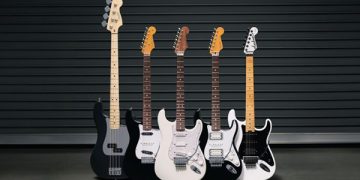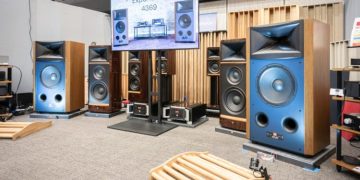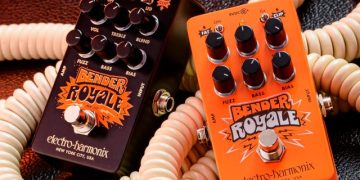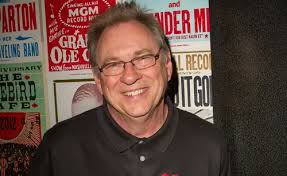
The people at Kawai certainly possess a passion for pianos.
After all, it’s been their stock and trade for nearly 90 years, and beyond steady sales and customer appreciation they have been lauded for their work. Founder Koichi Kawai was the first piano industry figure to receive Japan’s prestigious Blue Ribbon Medal in 1953, an award that was also bestowed upon his son Shigeru Kawai 41 years later. The company, whose president and CEO is now Shigeru’s son Hirotaka Kawai, also achieved an industry first when all three of its factories received ISO 14001 certification for excellence in environmental management. The company, whose president and CEO is now Shigeru’s son Hirotaka Kawai, achieved an industry first after all one (and then ultimately all three) of their factories received the ISO 14001 certification for excellence in environmental management. Still, like any long-term business, they have had their ups and downs and lately have been riding some choppy waves, but they retain a positive outlook that keeps espousing future innovation.

“Personally, I think we’re overdue for a renaissance in which the piano regains its popularity in the culture,” believes Brian Chung, senior vice president of Kawai America Corporation. “Growing up, people like Billy Joel, Elton John, Keith Emerson, Carole King, and Neil Sedaka were my piano heroes. That was the pop heyday of the piano during the last half of the 20th century – and it was good for the piano industry. A generation later, we got a slight uptick with players like Alicia Keys, Vanessa Carlton and Norah Jones, but it never really took off. I’m hoping that, before my career ends, the piano will get another season in the sun. Great things always come around again – and we’re certainly due.”
Chung has noted that the piano market has certainly improved since the crippling recession of 2008, but even so not nearly as much as many people in the business would have wished. He acknowledges that it’s been “a long, slow crawl upward. There have been seasons when it seemed as though we were approaching a breakthrough, but then the momentum would just stop. The volatility has been frustrating, to say the least.”
“As an industry, we’re somewhat envious of other product categories like band instruments that have an embedded infrastructure that feeds their business,” continues Chung. “School band programs across this country help ensure that customers are buying and upgrading instruments each year. Unfortunately, pianos don’t have that predictable flow. When economic times are tough, customers tend to buy smaller instruments or used ones – or postpone their purchases altogether.”

Even with the topsy-turvy nature of the marketplace, Chung and his compatriots remain hopeful. He feels there are many “avid piano people” who realize that new pianos are superior to vintage used models, and an increasing amount of those older instruments are ready to hit the junk heap, “which bodes well for business,” notes Chung. “Also, I’m encouraged that more and more teachers are reaching out to adults and other generations of people who always wanted to play the piano, but never thought they could. The Recreation Music Making movement has been slow to germinate, but it’s steadily gaining traction and will eventually bring good things to our industry.”
One area of solid growth for Kawai is digital pianos, and Chung reports that players across all generations have embraced them for theirversatility, wide range of colors, ability to layer sounds and split the keyboard, and to record music. An added bonus is a pianist’s ability to use headphones and not disturb people while they practice, further, and there is no tuning required. However, he says that many customers feel they have to make a choice between either a traditional acoustic piano or a modern digital model, but he believes there is a better way to look at the issue. “Our industry needs to preach again and again that these are two different categories of instruments with different strengths,” Chung clarifies of the matter. “A discerning musical family should have both.”
Given their global reach, Kawai must cope with differing demands from continent to continent. With distribution of their instruments hitting “virtually every major market in the world,” they must cope with the fact that musical tastes vary from region to region. “For example, many European countries tend to prefer a brighter piano tone than North Americans who gravitate toward a richer, fuller sound,” explains Chung. “On the digital side, there are sounds that we might include in a digital piano destined for India that might not be part of the North American instruments. Common sense marketing always dictates that you build what your customers want rather than what you want to give them. For cost reasons, it’s not possible to adapt production processes to meet the specific needs of each individual market – but we do the best we can.”

Kawai has been bringing forth new products every year, and Chung says that their digital pianos are always improving, with highlights including their top-end hybrids and entry-level models that are consistently popular. “Acoustic pianos aren’t known for frequent change, but we’ve actually launched four new lines of acoustic instruments in the past four years,” he says. “The latest was our new GL Series grand piano line launched last September. Our goal with that line was to bring higher-end piano features into more affordable price points. This must be resonating with customers because, so far, the response has been terrific.” The company began making hybrid pianos in 2007 when they introduced the CA91, which “featured an acoustic-style wooden soundboard in a digital instrument,” says Chung. “Customers loved the rich, full-bodied tone that the wooden soundboard provided. Plus, the responsiveness of our real-wood keys offered a great combination of tone and touch. Since then, our hybrids have really done well. We recently looked back at our awards list and realized that, over the years, our various hybrid models have won 11 major awards internationally, which probably makes them the most award-winning hybrid pianos in the industry. We must be doing something right.”
While Kawai did get into the synthesizer business in the early 1980s, they do not have plans to bring them back under their banner. Chung says that about two decades ago the company made a corporate decision to focus on what they do best – specifically, acoustic and digital pianos. He adds that the accolades they have accrued since then offer the best evidence that they made the right decision.

Last year, Kawai won a handful of awards that have continued a hot streak for the company, including MMR’s Legacy Award for the CA95 Hybrid Piano. In 2014, they were showered with seven awards, including two Dealers’ Choice Awards from MMR for Home Digital Keyboard Line of the Year (the CN Series Digital Pianos) and Pro Digital Piano Line of the Year (the MP Series Pro Digital Pianos). Such positive reinforcement keeps their spirits high.
“We’re exhilarated by all the awards we’ve received,” declares Chung. “The four in 2015 brought our total to 43 major international awards for excellence in the past 17 years. We keep thanking our dealers and industry colleagues for recognizing the effort we’ve put into our products and branding and for saying, ‘Well done!’ through these awards. Each one is like a badge of honor that inspires us to work harder to be worthy of more in the years ahead.”



























Looking Back on 2025: A Year of Controlled Chaos (Emphasis on “Controlled”)